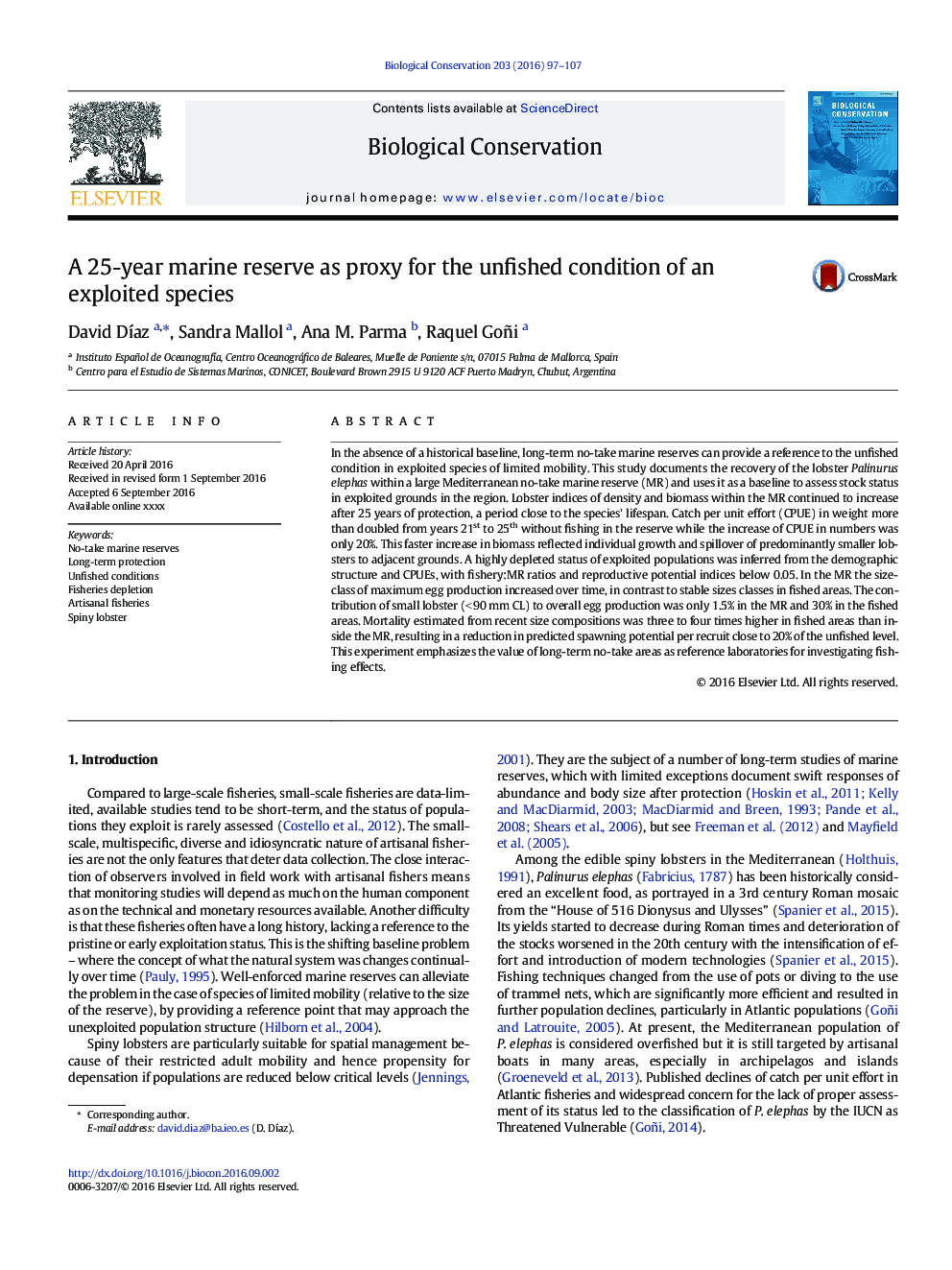| Article ID | Journal | Published Year | Pages | File Type |
|---|---|---|---|---|
| 6298062 | Biological Conservation | 2016 | 11 Pages |
Abstract
In the absence of a historical baseline, long-term no-take marine reserves can provide a reference to the unfished condition in exploited species of limited mobility. This study documents the recovery of the lobster Palinurus elephas within a large Mediterranean no-take marine reserve (MR) and uses it as a baseline to assess stock status in exploited grounds in the region. Lobster indices of density and biomass within the MR continued to increase after 25Â years of protection, a period close to the species' lifespan. Catch per unit effort (CPUE) in weight more than doubled from years 10th to 25th without fishing in the reserve while the increase of CPUE in numbers was only 20%. This faster increase in biomass reflected individual growth and spillover of predominantly smaller lobsters to adjacent grounds. A highly depleted status of exploited populations was inferred from the demographic structure and CPUEs, with fishery:MR ratios and reproductive potential indices below 0.05. In the MR the size-class of maximum egg production increased over time, in contrast to stable sizes classes in fished areas. The contribution of small lobster (<Â 90Â mm CL) to overall egg production was only 1.5% in the MR and 30% in the fished areas. Mortality estimated from recent size compositions was three to four times higher in fished areas than inside the MR, resulting in a reduction in predicted spawning potential per recruit close to 20% of the unfished level. This experiment emphasizes the value of long-term no-take areas as reference laboratories for investigating fishing effects.
Related Topics
Life Sciences
Agricultural and Biological Sciences
Ecology, Evolution, Behavior and Systematics
Authors
David DÃaz, Sandra Mallol, Ana M. Parma, Raquel Goñi,
